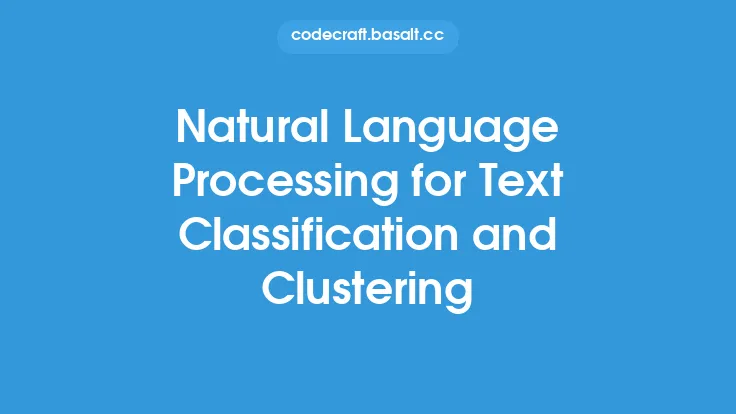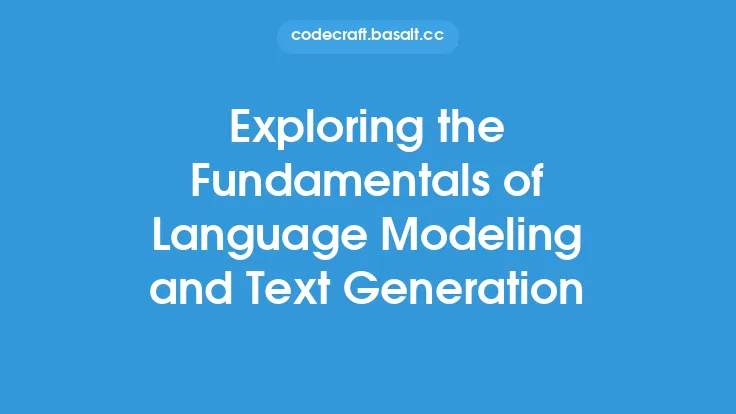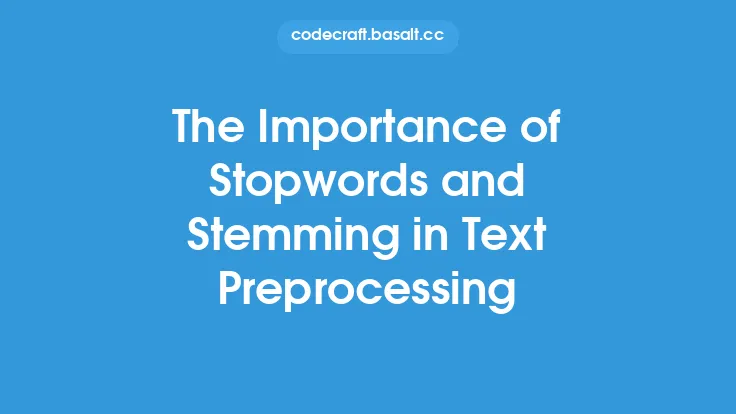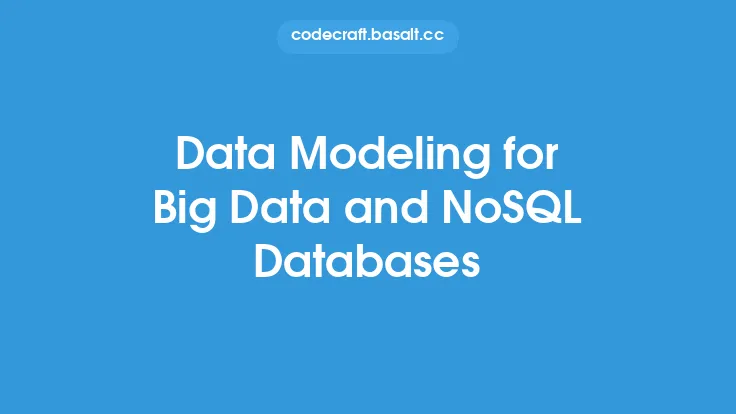Language modeling and text analysis are crucial components of natural language processing (NLP), a subfield of artificial intelligence that deals with the interaction between computers and humans in natural language. One of the key techniques used in language modeling and text analysis is the N-gram model. In this article, we will delve into the world of N-grams, exploring their definition, types, applications, and implementation in language modeling and text analysis.
Introduction to N-Grams
An N-gram is a contiguous sequence of n items from a given text or speech. The items can be words, characters, or syllables, depending on the level of granularity required. N-grams are used to model the probability distribution of a language, which is essential for language modeling and text analysis tasks. The probability distribution of a language is a statistical model that predicts the likelihood of a word or a sequence of words occurring in a given context. N-grams provide a simple yet effective way to estimate this probability distribution.
Types of N-Grams
There are several types of N-grams, each with its own strengths and weaknesses. The most common types of N-grams are:
- Unigrams: Unigrams are sequences of one item, typically a word. Unigrams are used to model the probability distribution of individual words in a language.
- Bigrams: Bigrams are sequences of two items, typically two words. Bigrams are used to model the probability distribution of word pairs in a language.
- Trigrams: Trigrams are sequences of three items, typically three words. Trigrams are used to model the probability distribution of word triples in a language.
- N-grams: N-grams are sequences of n items, where n can be any positive integer. N-grams are used to model the probability distribution of sequences of words in a language.
Applications of N-Grams
N-grams have a wide range of applications in language modeling and text analysis, including:
- Language modeling: N-grams are used to estimate the probability distribution of a language, which is essential for language modeling tasks such as text generation and language translation.
- Text classification: N-grams are used as features in text classification tasks, such as spam detection and sentiment analysis.
- Information retrieval: N-grams are used in information retrieval tasks, such as search engines and text retrieval systems.
- Speech recognition: N-grams are used in speech recognition systems to model the probability distribution of speech patterns.
Implementation of N-Grams
Implementing N-grams involves several steps, including:
- Tokenization: Tokenization involves breaking down a text into individual words or tokens.
- N-gram generation: N-gram generation involves generating sequences of n items from the tokenized text.
- Frequency counting: Frequency counting involves counting the frequency of each N-gram in the text.
- Probability estimation: Probability estimation involves estimating the probability distribution of each N-gram based on its frequency count.
Advantages and Disadvantages of N-Grams
N-grams have several advantages, including:
- Simple to implement: N-grams are simple to implement and require minimal computational resources.
- Effective: N-grams are effective in modeling the probability distribution of a language.
- Flexible: N-grams can be used for a wide range of applications, including language modeling, text classification, and information retrieval.
However, N-grams also have several disadvantages, including:
- Limited context: N-grams have limited context and do not capture long-range dependencies in a language.
- Data sparsity: N-grams can suffer from data sparsity, where the frequency count of an N-gram is zero or very low.
- Computational complexity: N-grams can be computationally complex, especially for large values of n.
Real-World Applications of N-Grams
N-grams have several real-world applications, including:
- Google's search engine: Google's search engine uses N-grams to model the probability distribution of search queries and retrieve relevant results.
- Speech recognition systems: Speech recognition systems, such as Siri and Alexa, use N-grams to model the probability distribution of speech patterns and recognize spoken words.
- Language translation systems: Language translation systems, such as Google Translate, use N-grams to model the probability distribution of language pairs and translate text from one language to another.
Future Directions
The future of N-grams is promising, with several potential applications and extensions, including:
- Deep learning: Deep learning techniques, such as recurrent neural networks and long short-term memory networks, can be used to improve the accuracy of N-gram models.
- Multimodal processing: Multimodal processing involves processing multiple forms of data, such as text, speech, and images, using N-grams.
- Cross-lingual processing: Cross-lingual processing involves processing text in multiple languages using N-grams.
Conclusion
In conclusion, N-grams are a powerful tool for language modeling and text analysis, with a wide range of applications in natural language processing. While N-grams have several advantages, including simplicity and effectiveness, they also have several disadvantages, including limited context and data sparsity. Despite these limitations, N-grams remain a fundamental component of many NLP systems, and their applications continue to grow and expand into new areas, such as deep learning and multimodal processing. As the field of NLP continues to evolve, it is likely that N-grams will play an increasingly important role in shaping the future of human-computer interaction.





